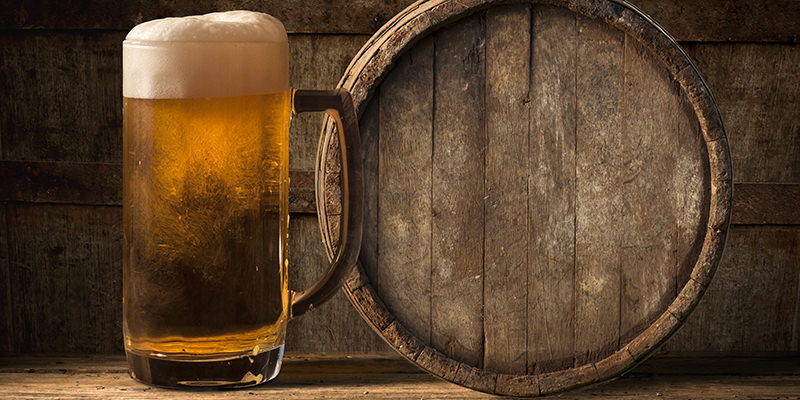Although the first page of Google results (and therefore I) lack firm evidence, it seems safe to speculate that sales of barrel-aged beers have been steadily climbing ever since Goose Island Brewing started messing around with the concept in the early 1990s. There are a number of reasons for this rise of the barrel-aged beer, some good, some otherwise.
Bourbon’s surging popularity is perhaps the biggest factor. Because all bourbon must be aged in new, charred-oak barrels, more than a million barrels a year are forced into early retirement, despite being in perfect working condition. Might as well sell them off to a good home ready to fill ‘em with beer! The wild success of Goose Island’s Bourbon County Stout helped, too. A lot of brewers like to cast themselves as iconoclasts and renegades, but there’s as much copy-catting in this game as in any other. (The sudden proliferation of grapefruit IPA wasn’t the result of a widespread, simultaneous epiphany, unless you’re counting “Damn, Ballast Point just sold for a billion dollars!?”)
The increasing sophistication of the marketplace helps, too. Dedicated beer-drinkers are no longer taken aback by double-digit ABVs or price tags. Plus, there wouldn’t be all these spare bourbon barrels lying around if the public hadn’t developed such a taste for the stuff, so it’s no surprise that we’re fond of infusing the flavor profile into our beer, too.
The special-release and ratings-site hype machines contribute, as well. The best way to get a perfect score or a line out the door is to age a dark beer until it tastes like vanilla, put it in an oversized, corked bottle, and charge $20 for it. And it’s not just imperial stouts anymore; throwing some wild yeast and fruit into a barrel of brew is a great way to produce a complex, funky beer, or, failing that, at least a weird mess that you can try to pass off as cutting-edge to people who will fall for anything sour.
Barrel-aging is risky from the brewer’s perspective, too. It takes time, money, and space to age a beer, and you’re never really sure what you’re going to get when you finally pop the bung. Every barrel is different, so it takes a lot of blending—and therefore a lot of barrels—to get anything approaching a consistent product, and aging a beer in wood also increases the odds of infection. Goose Island has more barrel-aging experience than anyone, and say what you will about their parent company, but Anheuser-Busch is known to be meticulous about quality control. And yet, just this past winter Goose Island recalled bad bottles of their Bourbon County Stout Coffee and Barleywine variants (the recall acknowledged only “off flavors,” rather than infection or contamination).
But enough of such unhappy talk. We came here today to celebrate great barrel-aged beers, such as these 10, which showcase a wide range of beer styles aged in a diverse array of wine and spirits barrels.
Founders Backwoods Bastard
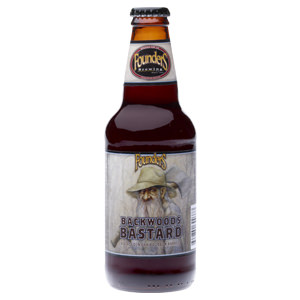
Their Kentucky Breakfast Stout gets all the attention, but Backwoods Bastard is my favorite of Founders’s barrel-aged offerings. The bourbon-rested version of Dirty Bastard Scotch ale is a deceptively smooth 11.6-percent alcohol-by-volume monster with vanilla, caramel, dark fruit, coconut, and maple flavors.
Tallgrass Wooden Rooster
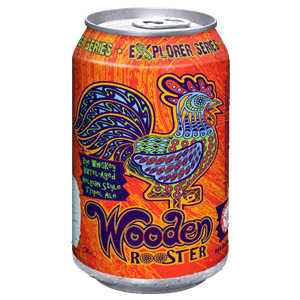 This is a 9.5-percent ABV rye-barrel-aged edition of Tallgrass’s Belgian-style tripel, Velvet Rooster. It’s rich, fruity, and sweet, with the rye adding strong vanilla flavor and a spicy edge. Perhaps the best thing about this Manhattan, Kansas, product is its packaging: The world needs more 12-ounce cans of wood-aged tripel.
This is a 9.5-percent ABV rye-barrel-aged edition of Tallgrass’s Belgian-style tripel, Velvet Rooster. It’s rich, fruity, and sweet, with the rye adding strong vanilla flavor and a spicy edge. Perhaps the best thing about this Manhattan, Kansas, product is its packaging: The world needs more 12-ounce cans of wood-aged tripel.
Brooklyn Intensified Coffee Porter
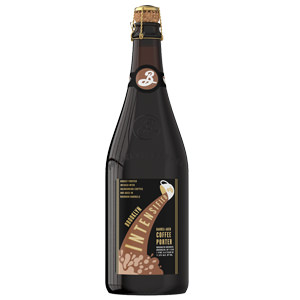 Beer prices are escalating steadily, but the high-end stuff is still inexpensive relative to wine and spirits. That said, I never argue with people who consider affordability to be one of beer’s primary attractions and therefore refuse to spend $25 on a single 750-milliliter bottle. However, I still recommend trying this 11.8-percent ABV Blue Bottle coffee-infused, bourbon barrel-aged imperial porter if you get the chance. Dark fruit, leather, chocolate, and coffee are complimented by oaky vanilla in a rich, rewarding dessert beer that gets better as it approaches room temperature.
Beer prices are escalating steadily, but the high-end stuff is still inexpensive relative to wine and spirits. That said, I never argue with people who consider affordability to be one of beer’s primary attractions and therefore refuse to spend $25 on a single 750-milliliter bottle. However, I still recommend trying this 11.8-percent ABV Blue Bottle coffee-infused, bourbon barrel-aged imperial porter if you get the chance. Dark fruit, leather, chocolate, and coffee are complimented by oaky vanilla in a rich, rewarding dessert beer that gets better as it approaches room temperature.
Cigar City White Oak Jai Alai
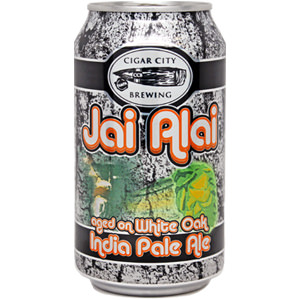 This is the wood-aged version of Cigar City’s justifiably renowned Jai Alai IPA. It’s made in Tampa and it’s 7.5-percent ABV. Here’s another interesting fact about White Oak Jai Alai: I’ve never tried it. But I was casting about for a barrel-aged IPA to recommend, and the only one I could think of was Dogfish Head’s excellent Burton Baton, which I include in about every third beer list I make. Other than that, I haven’t had great luck with barreled IPAs, because I find that the aging tends to diminish the hop profile to such an extent that it undercuts whatever wonders the wood might contribute.
This is the wood-aged version of Cigar City’s justifiably renowned Jai Alai IPA. It’s made in Tampa and it’s 7.5-percent ABV. Here’s another interesting fact about White Oak Jai Alai: I’ve never tried it. But I was casting about for a barrel-aged IPA to recommend, and the only one I could think of was Dogfish Head’s excellent Burton Baton, which I include in about every third beer list I make. Other than that, I haven’t had great luck with barreled IPAs, because I find that the aging tends to diminish the hop profile to such an extent that it undercuts whatever wonders the wood might contribute.
Boston bartender and beer consultant Gabe Bellegard Bastos assures me that White Oak Jai Alai is the exception. Specifically, he says, “I love regular Jai Alai, but if I were looking for things to complain about regarding that beer, I might say it has just a little too much juicy sweetness to it. Aging Jai Alai in white oak elegantly fixes that very small problem. It’s not like the sugar evaporated, it’s still there. But the tannins imparted by the oak counterbalance the sugar with some much-needed dryness.” Sounds convincing to me.
Cambridge Brewing La Saisonierre
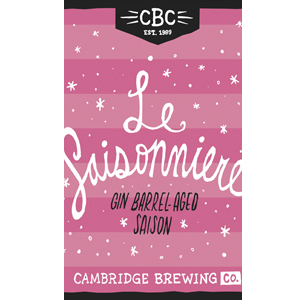 At 4.8-percent ABV, this gin barrel-aged grisette proves that not all wood-aged beers need to be huge. The gin provides dill, anise, and coriander notes that blend wonderfully with the base beer’s light citrus and black pepper character.
At 4.8-percent ABV, this gin barrel-aged grisette proves that not all wood-aged beers need to be huge. The gin provides dill, anise, and coriander notes that blend wonderfully with the base beer’s light citrus and black pepper character.
Firestone Walker 19th Anniversary Ale
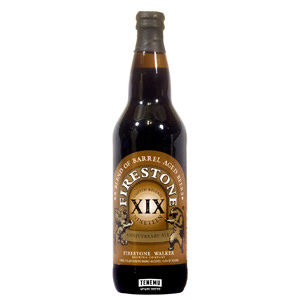 Every year, Firestone Walker has teams of winemakers from around its Paso Robles, California, headquarters compete to design the blend that will become Anniversary Ale. The 19th edition is a 13.8-percent ABV knockout consisting of 33 percent Parabola (Russian imperial oatmeal stout aged in bourbon barrels), 33 percent Stickee Monkee (quadrupel-style ale aged in bourbon and other whiskey barrels), 16.7 percent Bravo (imperial brown ale aged in bourbon and brandy barrels), and 16.7 percent Velvet Merkin (oatmeal stout aged in bourbon barrels). Firestone Walker sent me a sample late last year, and it was quite possibly the best beer I had in 2015. It tastes like dark chocolate, rum-soaked plums, high-end orange liqueur, brownies, and a couple dozen other wonderful things.
Every year, Firestone Walker has teams of winemakers from around its Paso Robles, California, headquarters compete to design the blend that will become Anniversary Ale. The 19th edition is a 13.8-percent ABV knockout consisting of 33 percent Parabola (Russian imperial oatmeal stout aged in bourbon barrels), 33 percent Stickee Monkee (quadrupel-style ale aged in bourbon and other whiskey barrels), 16.7 percent Bravo (imperial brown ale aged in bourbon and brandy barrels), and 16.7 percent Velvet Merkin (oatmeal stout aged in bourbon barrels). Firestone Walker sent me a sample late last year, and it was quite possibly the best beer I had in 2015. It tastes like dark chocolate, rum-soaked plums, high-end orange liqueur, brownies, and a couple dozen other wonderful things.
Goose Island Lolita
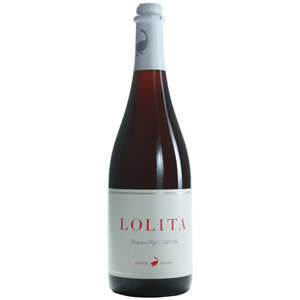
Lolita is a 9-percent ABV Belgian-style ale aged with raspberries and wild yeast in Cabernet Sauvignon barrels. It somehow manages to be both sweet and tart, with uncommon balance and approachability for the style.
Allagash Interlude
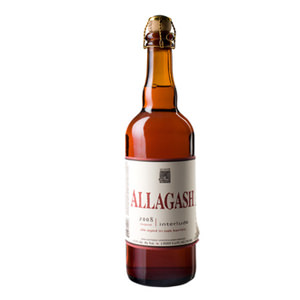 The base for Interlude is a strong farmhouse ale, which is then aged in Merlot and Syrah barrels that contribute a dry, tannic character and plum and tobacco flavors that elevate the underlying spiciness and the earthy, lightly tart, fruity contribution from brettanomyces yeast.
The base for Interlude is a strong farmhouse ale, which is then aged in Merlot and Syrah barrels that contribute a dry, tannic character and plum and tobacco flavors that elevate the underlying spiciness and the earthy, lightly tart, fruity contribution from brettanomyces yeast.
Deschutes Cognac-Aged Abyss
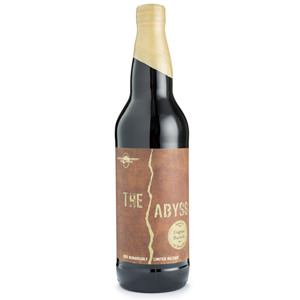
Last year Deschutes produced limited-edition Rye and Cognac spinoffs of their legendary imperial stout, Abyss. Regular Abyss is complex enough, with 50 percent of the final blend aged in a combination of bourbon, new oak, and Pinot Noir barrels, and the extra aging in Cognac casks is enough to make the sample they sent me one of the very finest imperial stouts I’ve ever had.
Almanac Elephant Heart de Brettaville
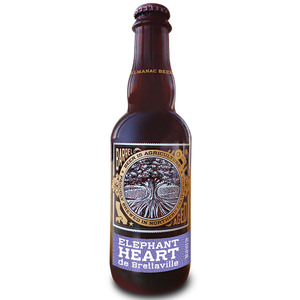 San Francisco’s Almanac named this for the Elephant Heart plums that provide a defined, elegant, dark-fruit flavor that pairs perfectly with the very tart, lightly funky character imparted by the brettanomyces yeast. Oak aging lends vanilla and softens the sour edge, and dry-hopping with El Dorado elevates the tropical notes that distinguish Elephant Heart de Brettaville from its peers.
San Francisco’s Almanac named this for the Elephant Heart plums that provide a defined, elegant, dark-fruit flavor that pairs perfectly with the very tart, lightly funky character imparted by the brettanomyces yeast. Oak aging lends vanilla and softens the sour edge, and dry-hopping with El Dorado elevates the tropical notes that distinguish Elephant Heart de Brettaville from its peers.

